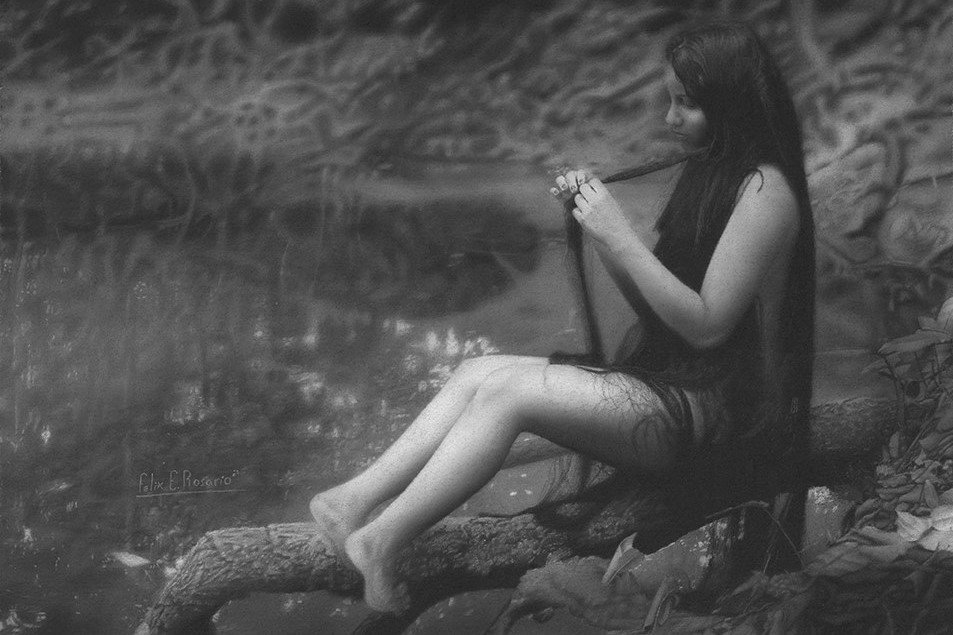Spirits of St. Katherine's Abbey in County Limerick, Ireland
Stock images tells me this is Ireland and I think they know I have no way of confirming that; so here we are…
In the 14th century the Earl of Desmond, a lord in Ireland, was feuding with a noble family called the Butlers. During one attack the Earl and his wife, the countess, had to make a hasty escape toward an Augustinian monastery in County Limerick.
When attempting to mount a horse the countess was hit in her thigh by an arrow attack. The Earl quickly lifted her onto his lap and the two rode off while her life began to slip away. By the time they arrived at the monastery she had succumbed to her injuries.
With the Butlers approaching, the Earl buried his wife under the church’s main altar and rode off on his horse.
Days later the nuns at the monastery started to hear screaming during the nights and reportedly witnessed the ghostly figure of the countess roaming the church’s ground. The hauntings became so widespread they decided to move her burial site. Upon digging up her body, they found her fingers were torn with bones broken. The countess had been buried alive.
Her screams are still heard late at night to this day.
Saint Katherine’s Abbey
Throughout history, we’ve seen monasteries become twisted and lose their way, for example, Mortemer Abbey in France, where monks started the monastery with the intent to steer away from material items and wealth but, within a few centuries, many monks had turned away from those ideals and the abbey.
Though it doesn’t appear to have been as widespread, in Saint Katherine’s Abbey some did turn away but not towards materialistic items, instead, they turned to witchcraft.
The year the monastery was constructed is not known but it’s thought to have been constructed in the mid-13th century as records show it is up and running in 1298, mainly as a nunnery. At first, like many monasteries in Europe, the abbey was well respected and seen as a necessary fact of life.
“The Abbey of the Black Hag”
However as the years went on and views began to change the abbess, or leader of the nuns, at the abbey, began looking elsewhere for spiritual guidance. In the early 15th century the abbess was rumored to begin delving into black magic.
Word spread quickly and as many nuns left she soon became the only nun left in the abbey which by now was given the nickname “The Abbey of the Black Hag”. The room where she lived within the abbey became known as “The Black Hag’s Cell”.
There are different origins to the black hag moniker given to the nun, one was said to be due to her practicing black magic, usually in the dark and at night, wherein any passersby would only see her black silhouette.
Another rumor says the magic she practiced drained her of her beauty causing her face to age dramatically and wither, giving the appearance of a darkened face.
Whatever the reason was, her reputation spread through the land. Other rumors included her traveling to the local town and performing sexual acts as part of her rituals for her black magic.
The End of the Abbey
Soon word reached the Earl of Desmond who was documented as saying the nuns were “leading loose and dissolute lives.” Eventually, Pope Martin V got word of her acts and he issued a decree in 1432 shutting down the abbey.
But shutting it down wasn’t enough for the people, they arrested the nun, tried her for witchcraft, and found her guilty. She was burned at the stake leaving her charred remains with a blackened face just as the town had suspected she had.
The monastery was reopened under a new parish but a hundred years later it was closed for good along with many other monasteries under the rule of King Henry VIII. Today only the ruins of the abbey remain but many report seeing a shadowy figure roaming the land and hearing the screams of the countess of Desmond late in the night.
Investigations into The Timeline
I should add during my research for this legend I found a few sources with different timelines. Some report the abbess, who was burned at the stake, as having been the last abbess for the monastery before it was closed in the 1540s. Of course, this then wouldn’t fit with the timeline of Pope Martin V, as he oversaw the church between 1417 and 1431.
It’s possible the legend of the black hag was a made-up story used as propaganda to give legitimacy for its closing during the 16th century under King Henry’s rule, since the money and antiques taken from the closed monasteries at the time went to the crown, with much of it to the military.
Of course, the question would be why does this monastery have the legend of the black hag and not all others that were closed at the time?
The Countess of Desmond
There’s also the question of the supposed death of the countess of Desmond in the abbey. Since the legend doesn’t specify which Earl of Countess of Desmond was under attack from the Butler family, I researched the lineage of all the Earls during the 14th to 16th centuries. Since the title was given to the main members of the Fitzgerald family, it was a simple task.
Cross-referencing their noted wives with historical data and dates of attacks from the Butlers it appeared the Earl in question would have been the 7th Earl of Desmond but it turns out his wife Ellice de Barry died in 1486 in County Waterford. Also during this time the Earl was involved with the War of the Roses and would most likely not have been anywhere near the abbey.
In the end, I couldn’t find any corroborating evidence for any of the legends but these legends took place five hundred years ago and it’s entirely possible the records are off, missing details, or have been changed through time.
Either way, those who have visited the abbey do report feeling a presence there. Maybe the black hag’s spirit watches over the land and the screams of a woman thought to be the countess belong to another who was buried alive under the sacred land of the church.













